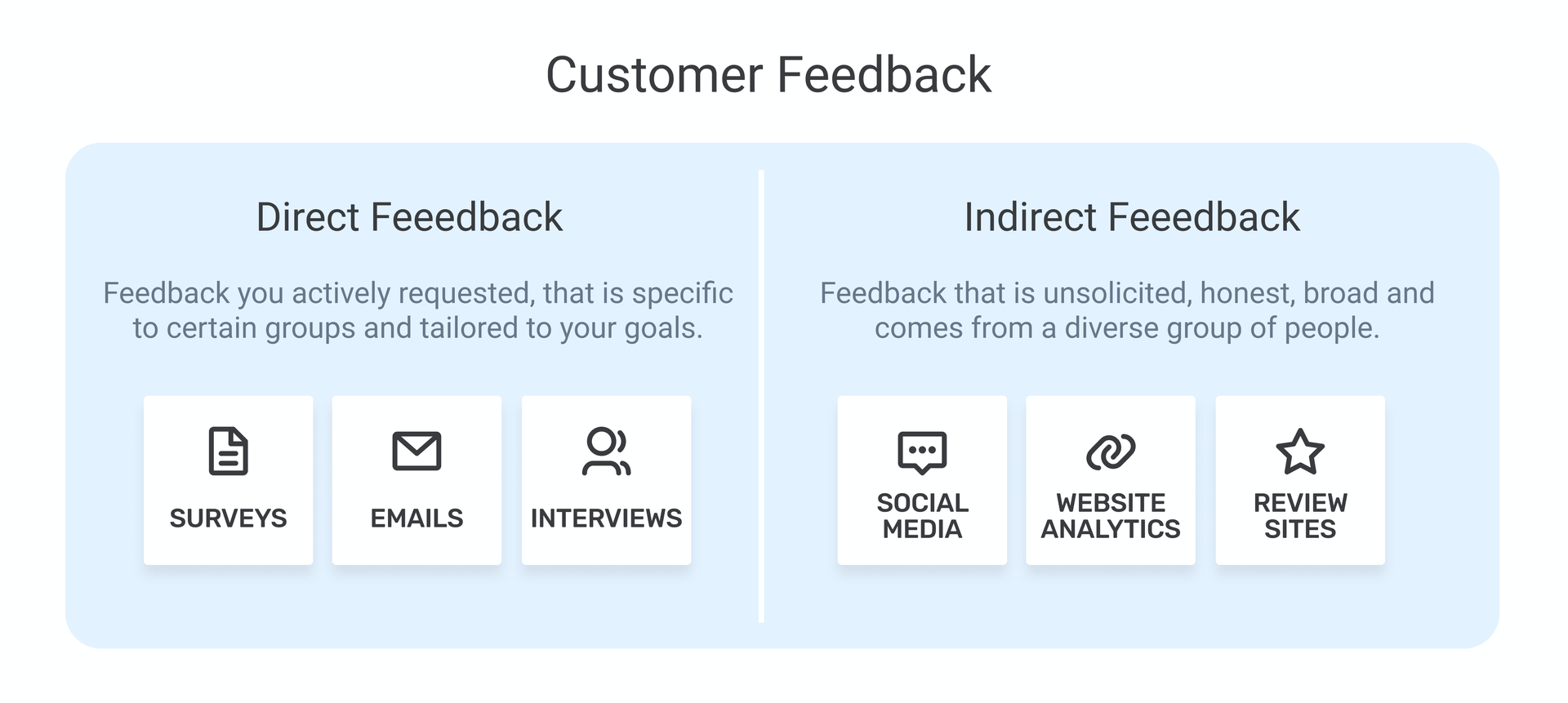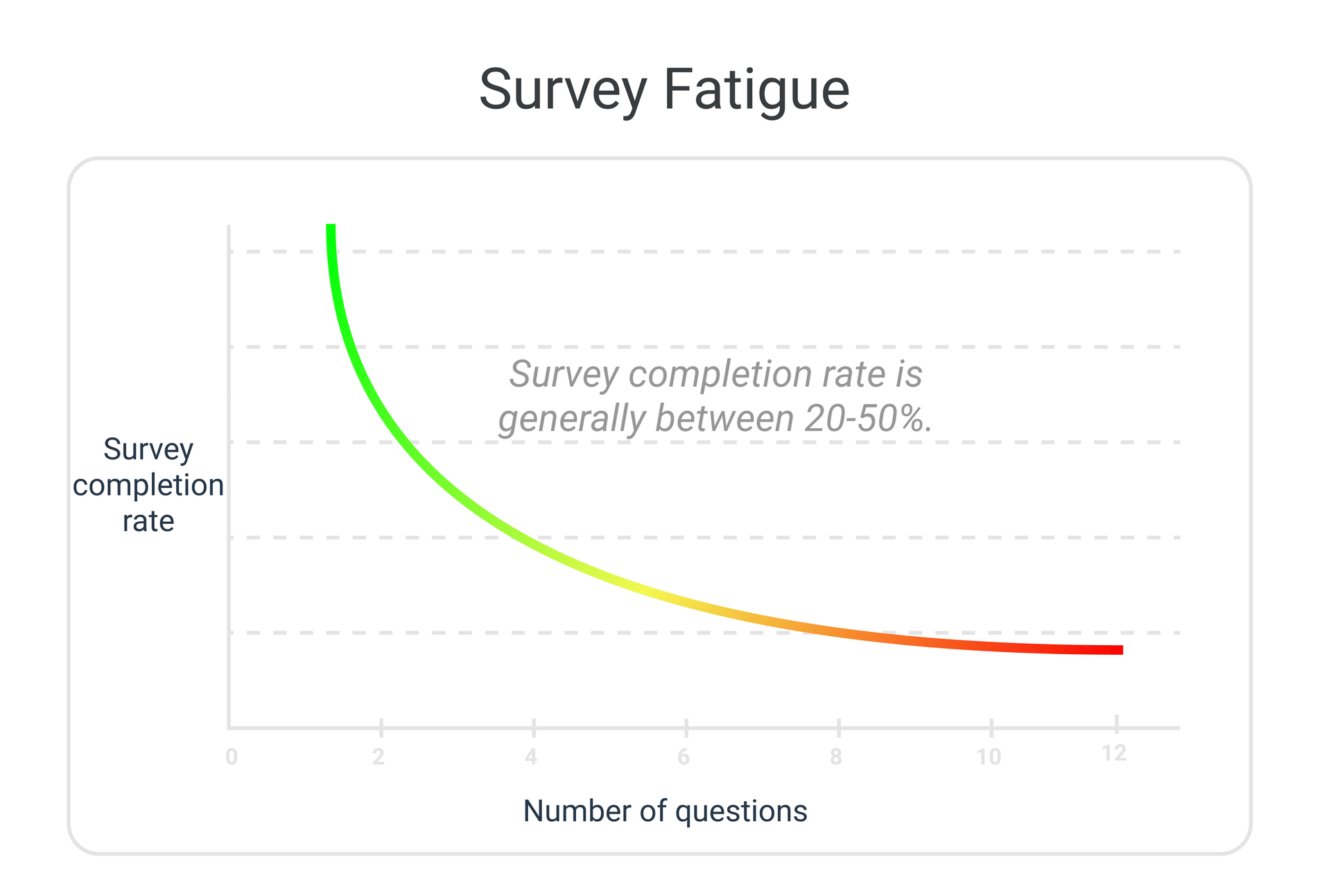Top 8 Benefits of Customer Feedback

Whether it’s good or bad, customer feedback can help you to transform your business into a customer-centric company set up for growth and success.
If you listen to customer feedback, you can put customers at the center of your business decisions, making it easier to retain existing customers and gain new ones.
You’ll also be able to edge out competition that is less focused on customer-centricity.
If you don’t listen to customer feedback…
You won't know what is working well for your customers, and what is not.
It’ll be impossible to shape your products to meet your customers' wants and needs, to improve their overall customer experience (CX), and prevent churn.
Here we’ll go through the top benefits of customer feedback, as well as some of the disadvantages:
What is Customer Feedback?
The term customer feedback covers any kind of information your customer provides that tells you about their experience with your company. This can be good, bad, or neutral.
Customer feedback can be collected in a number of different ways, and it can be grouped into two main groups:

You can also see some great examples of customer feedback methods here.
Now that you know the most common types of feedback, let’s cut straight to the benefits.
Customer Feedback Benefits: 8 Reasons Why You Need to Listen to Your Customers
Customer feedback can bring a lot of positives to your organization. Here are 8 top benefits of customer feedback:
- Understand your customers better
- Make your customers feel heard
- Increase customer satisfaction
- Improve products and services
- Enhance the customer experience
- Boost loyalty
- Gain new customers
- Make informed business decisions
1. Understand Your Customers Better
Customer feedback allows you to learn a lot about your customer, from where they live and their age to what they like about their experience with your organization and what they don’t.
This information can be gathered by surveys, social media monitoring, web analytics, and more.
When you understand your customers you know what excites them, what irritates them, and what motivates them to purchase. This all means that you are better able to provide them with an experience they enjoy and, in turn, will make them loyal to your company.
2. Make Your Customers Feel Heard
Humans like to be listened to, it’s in our nature. It makes sense then, that customers want to share, and be listened to by companies.
In fact, one study showed 89% of respondents wanted to provide feedback to brands. That makes your job of collecting feedback a lot easier.
When you listen to your customers' feedback, they see you listening to them and trying to make their experience better. This makes them more satisfied and more inclined to keep doing business with you.
To let them know you’re listening, you’ll need to close the feedback loop.
In other words, let customers know that you’re working on solving or have already solved their problems.

3. Increase Customer Satisfaction
Customer satisfaction is an important metric to keep track of. Why? Happy customers are more likely to be loyal which then leads to repeat business.
If you don’t ask your customers for feedback, you won’t know how happy and satisfied they are. This might seem like a no-brainer, but you’d be surprised how often it is overlooked.
Using feedback surveys like the Customer Satisfaction Survey (CSAT), you can ask your customers how satisfied they are doing business with you, and get feedback quickly. With these results you can then fix and improve areas of your customer experience that are impacting satisfaction levels.
4. Improve Products and Services
Hearing what your customer likes and doesn't like about your products helps you to shape them into something that they are more likely to buy.
By gathering product feedback from your customer, you can also see what they are missing. This could give you an opportunity to sell them another one of your products, or create a completely new product to fill that gap.
Therefore collecting customer feedback, through formats like in-app surveys, or feature requests, is a great way to create products, or fix existing ones, that better suit your customers wants and needs.
5. Enhance Customer Experience
When you listen to your customers consistently, you’ll start to hear ways you can improve their customer experience. The great thing about gathering customer feedback is that it allows you to isolate particular areas that need tweaks and improvements.
One area that is particularly important is customer service. Your customer service agents are often the face of your brand, and the experience your customers have with them can impact their entire journey with you. So by monitoring call and chat history or sending out surveys following interactions, you can make meaningful improvements.
6. Boost Loyalty
Customer feedback tells you what is and isn’t working in your customer service experience, and what is preventing your customers from being loyal. Loyalty is important because loyal customers are less likely to head to the competition and more likely to recommend you to their personal network.
One particular survey for gauging brand loyalty is the Net Promoter Score Survey (NPS). This survey asks how likely your customer is to recommend you to their contacts and why. You can send this survey out following important milestones.
Then, with the information you get back, you can see why it is that your customers would, or would not recommend you. From here, you can work on making improvements to increase your number of Promoters.
7. Gain New Customers
It’s a fact that people buy based on recommendations from other people. This even includes strangers. According to this survey, 91% of 18-34 year olds would trust an online review as much as they would a recommendation from someone they know. That means that positive indirect feedback in the form of online reviews can result in an increase to your customer base.
As we’ve looked at, referrals from your existing customers also tend to come from loyal customers. So, using customer feedback to fix problem areas and enhance loyalty, you are also more likely to gain new customers.
8. Make Informed Business Decisions
Every business decision you make should be backed by hard data, ideally the insights you gain from analyzing your customer feedback. It’s these insights that tell you exactly what your customer wants and how you can make improvements.
When you make important business decisions using customer feedback, you’re more likely to make improvements, enhancements, and/or create products that work for your customers and improve their overall experience with your brand.
Want to learn more about how you can analyze your open-ended customer feedback responses so you can make informed business decisions? Explore MonkeyLearn.
Customer Feedback Disadvantages
While customer feedback is overwhelmingly beneficial, it still does have its challenges.
Being aware of these 6 disadvantages before you start gathering customer feedback can help you to better tackle them:
1. Difficulty Analyzing For Insights
Having a well rounded, thorough approach to collecting customer feedback means that you can be left with huge amounts of unstructured information, especially if you are asking open-ended, qualitative questions.
Processing all of this data manually is difficult, if not impossible, it’s also subjective and messy.
You can overcome this with an automated, powerful tool like MonkeyLearn. Powered by AI, MonkeyLearn uses text analysis tools like a keyword extractor and sentiment analyzer to help you process huge amounts of data for insights in a matter of seconds without you having to wade through masses of unstructured information.
You can also view everything in one place with the MonkeyLearn Studio dashboard pictured here:

2. Customer Feedback Can Be Incorrect and Vague
Customer feedback doesn't always give you the most accurate picture of how your customers are feeling. For instance, it might be just the disgruntled customers that want to provide feedback.
This voice won’t necessarily be representative of your entire customer base, but it could be the voice you hear the most. This makes it difficult to know whether your feedback is giving you the whole picture.
However if you are hearing a recurring sentiment from a number of different customers, you can probably assume that it represents reality.
3. Opinions Can Be Biased
Everyone has certain biases and these cannot be taken away. These biases can also be influenced by people in your social group, or even strangers.
For example, if you had an excellent experience with a product but when you went to write a review and saw that every review was negative, you may start to question whether your experience really was that good.
You can work to minimize bias. For example, with customer surveys it’s important to avoid asking leading questions and keep the questions as neutral as possible to avoid triggering biases.
4. Customers Can End Up Frustrated
If customers have provided their feedback, yet feel as though they were not heard, this can lead to feelings of frustration and/or resentment.
When customers give feedback they often do so with the expectation that their idea should be automatically implemented. Unfortunately, things do not always work this way, and it’s not always possible to implement everyones’ feedback.
This is why it is so important to close the feedback loop. Even if you are not able to implement all feedback, you can acknowledge what your customers' are telling you and let them know you are considering it. They will at least know that you have received it, and that their time was not wasted.
5. Feedback Fatigue

Customers can get sick of receiving or completing surveys, especially if they are long and take a lot of brainpower to finish. When feedback fatigue strikes, your customers may abandon the survey halfway through, or not even start. This means you lose out on valuable insights.
This can be countered by thinking about how often you request feedback from your customers. Carefully planning how you ask your questions and how many questions you are asking is important. Customer feedback questions that are complicated or confusing should be avoided. So too should surveys that are long and seem never ending.
Wrap Up
There are many benefits of customer feedback and many of them lead to customer retention and increased growth. These benefits tend to far outweigh any challenges.
Feedback however, is nothing without analysis, therefore it’s crucial to have a tool like MonkeyLearn to process that feedback and gain as many insights as possible.
Sign up to MonkeyLearn today to get an idea of how you can turn your customer feedback into insights that will help make your business more successful.

Tobias Geisler Mesevage
January 5th, 2022






